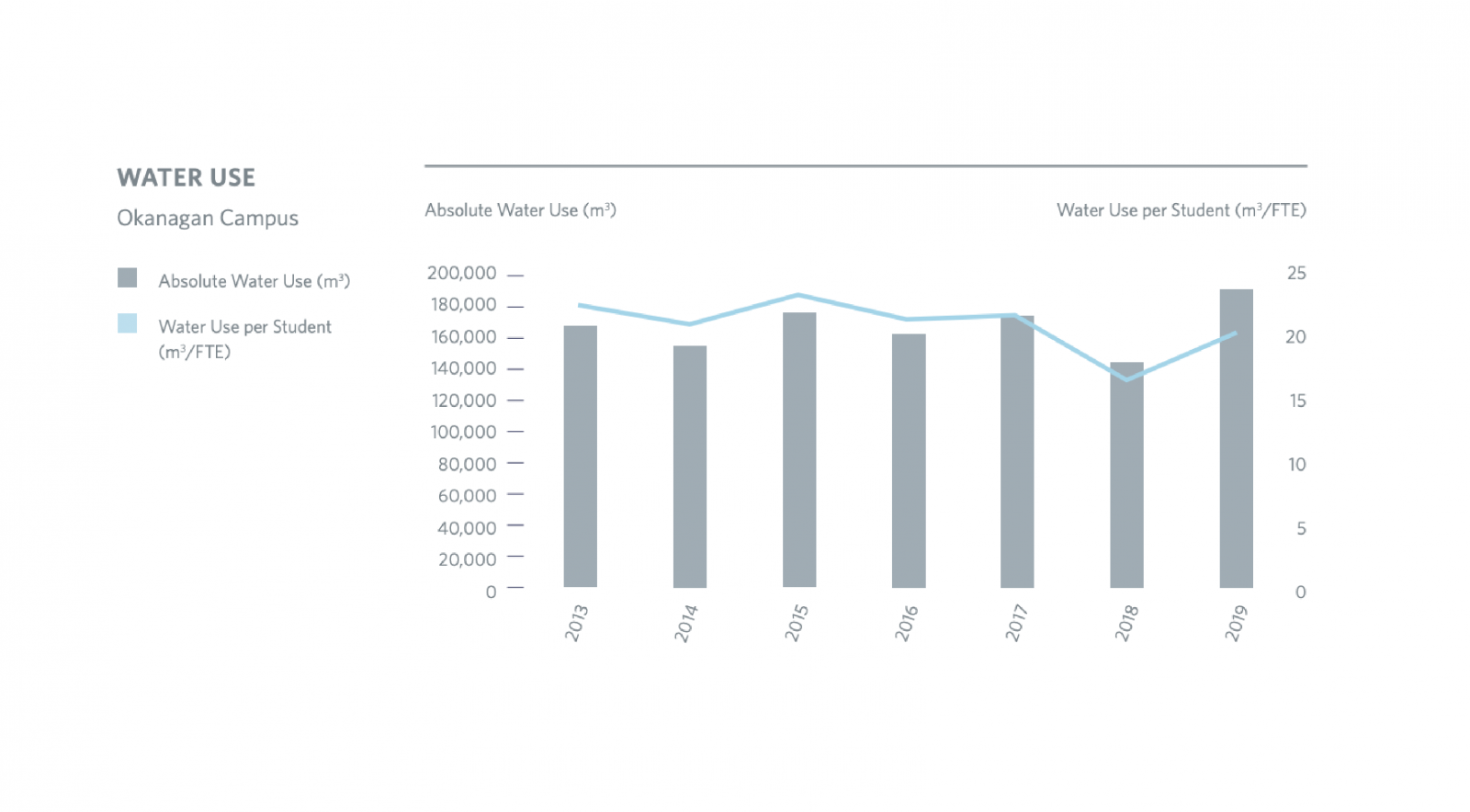Efficient water use, greater resilience in the face of increasing drought periods, and effective management of heavy rainfall events are important goals at UBC. Multiple departments are collaborating to address these issues through development of new and better tools for metering and analyzing consumption, improving the efficiency of buildings and infrastructure, and engagement programs.
70%
REDUCTION IN WATER USE INTENSITY PER STUDENT SINCE 2000 (VANCOUVER)
10%
REDUCTION IN WATER USE INTENSITY PER STUDENT SINCE 2013 (OKANAGAN)
50%
REDUCTION IN ABSOLUTE WATER CONSUMPTION SINCE 2000 (VANCOUVER)
20M³
WATER USE PER STUDENT (OKANAGAN)
KEY ACHIEVEMENTS
UBC VANCOUVER
Increased water efficiency | UBC Vancouver continues to incrementally increase water use efficiency across institutional buildings through high efficiency new green buildings, building renewals and retrofits, and more efficient infrastructure. During the reporting year, UBC measured a further 2.6% reduction in water consumption for institutional buildings while our student population and floor space continued to grow between 2 to 3%.
New stormwater management designs & monitoring | Guided by UBC’s Integrated Stormwater Management Plan, new UBC developments are exploring the use of community scale stormwater detention facilities. The first is proposed for the new Brock Commons site, and will allow the development site to not be burdened by the infrastructure.
In addition, UBC has also recently installed a Stormwater Quality Monitoring Station in the southern campus to collect data on flow rates and water quality parameters. The data will be used for planning and control of the stormwater system.
SEEDS research explores underground water storage option for Stadium Neighbourhood | A team of SEEDS researchers explored options for a stormwater detention facility and underground parkade to reduce surface stormwater runoff resulting from a 10-year and 100-year storm events that are expected to cause erosion of the adjacent cliffs, and increase pressure on the current stormwater network.
Under this scenario, stored and treated water would be distributed to the stadium, nearby botanical garden, and reused for irrigation and flushing toilets. Stored water can also infiltrate into the native soils and act as a groundwater recharge source.
UBC OKANAGAN
Skeena Residence landscape designed to reduce irrigation and strengthen local ecology | In alignment with UBC Okanagan’s updated Design Guidelines, the new Skeena Residence will incorporate non-invasive landscape plants that are appropriate for the site conditions, climate, and restore native plants and biodiversity. The Skeena Residence landscape will also utilize a raingarden to manage all rainwater on-site, while providing social amenity and ecological co-benefits.
Low Impact Development (LID) facilities | UBC Okanagan’s Integrated Rainwater Management Plan (IRMP) includes the application of Low Impact Development (LID) facilities such as raingardens and bioswales that achieve rainwater management with ecological and social co-benefits. LID applications will be incorporated into all new building landscape designs to achieve the IRMP’s minimum retention requirements while providing a valuable social amenity.


